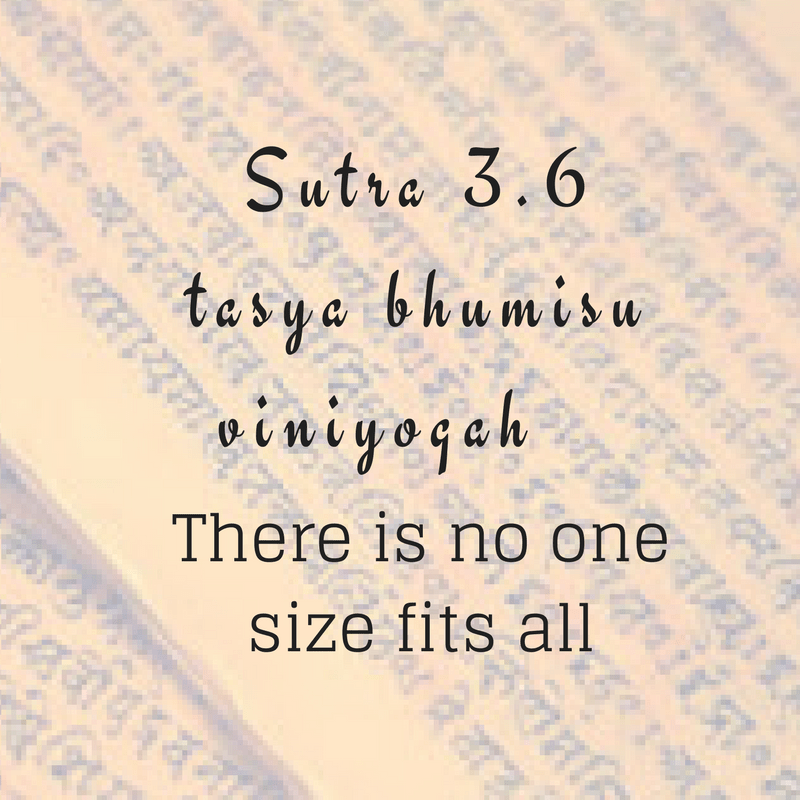viniyogah: What is Viniyoga?

 At The Yoga Institute we don’t teach any particular ‘style’ of yoga. We teach yoga according to the principle of the ‘viniyoga of Yoga’.
At The Yoga Institute we don’t teach any particular ‘style’ of yoga. We teach yoga according to the principle of the ‘viniyoga of Yoga’.
The viniyoga of Yoga can be described as the intelligent and systematic application of yoga tools and techniques according to the unique needs and circumstances of the individual.
This principle was a key part of the Yoga lineage passed down from Sri T Krishnamacharya to his son TKV Desikachar and forms the foundation of what we teach.
Yoga Sutra 3.6
As outlined in Patanjali’s Yoga Sutra 3.6, the 8 limbs of Yoga are intended to be practiced according to this principle of viniyoga – with specific consideration of the individual and to be continuously linked as changes occur.
If you are practicing a pose that is not being adjusted for your body – are you practising Yoga?
If you are moving too quickly or slowly for your breath – are you practising Yoga?
An example of the principle of the viniyoga of Yoga in practice is that cultivating the quality of discipline (tapas) may mean one person needs to increase their effort, but another person may need to decrease their effort for best results.
This is viniyoga.
This approach to yoga is independent of ‘yoga styles’. One person may require a very strong physical practice with less focus on meditation, another may need a more gentle physical practice with more focus on particular breathing or meditation practices.
Viniyoga is a highly intelligent approach to Yoga. This individualised application of yoga tools and techniques has powerful transformative effects.
Further Reading
Gary Kraftsow skilfully communicates this integrated approach in his book Yoga for Transformation.
The Viniyoga of Yoga: The Art of Appropriate Application*
Chapter three explains the Viniyoga of Yoga. Gary communicates that the Viniyoga teaching lineage can be represented by two models: age and orientation. These models represent different approaches to practice.
“One of the key insights Viniyoga is that in developing a personal Yoga practice, it is essential to respect our individual situations and requirements and take into account constitution, place, gender, time, age, capacities, aspirations, and activities.”
“In keeping with this insight, its practices are concerned with not only the development of our bodily structure, but of our breath, voice, memory, intellect, character, and heart as well. And its specific methodologies – which include physical postures (āsana), breathing exercises (prāṇāyāma), chanting, meditation, ritual, prayer, and study – all all designed to work deeply into the root of our being, to release our tensions, transform our conditioning, and unlock our highest human potential.”
Gary Kraftsow
* This book is on the recommended reading list for our Teacher Trainees and is a valuable resource in designing personal practices.
